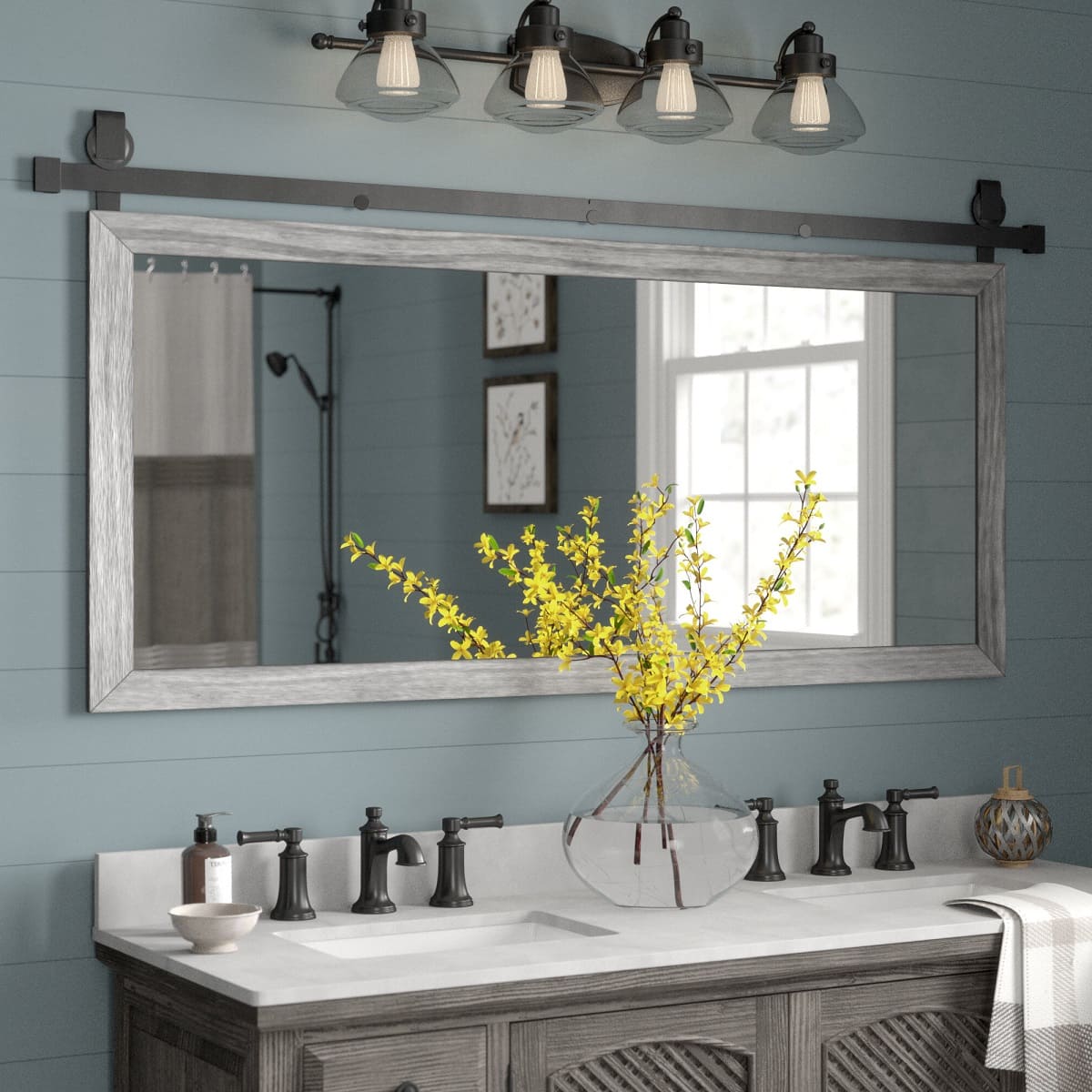

Articles
How Big Should The Mirror Be Over The Vanity
Modified: February 21, 2024
Discover the ideal size of mirrors for your vanity in this informative article. Find out how to choose the perfect mirror to enhance your bathroom's aesthetics.
(Many of the links in this article redirect to a specific reviewed product. Your purchase of these products through affiliate links helps to generate commission for Storables.com, at no extra cost. Learn more)
Introduction
When it comes to designing the perfect bathroom, one important element to consider is the size of the mirror that will be placed over the vanity. The mirror is not only a functional item, but it also plays a crucial role in enhancing the overall aesthetics of the space. Choosing the right size for the mirror can have a significant impact on the functionality, balance, and visual appeal of the bathroom.
In this article, we will explore the factors to consider when determining the ideal size for the mirror over the vanity. By understanding these considerations, you can make an informed decision that will create a harmonious and visually pleasing bathroom design.
Before we delve into the specifics, it’s important to note that there is no one-size-fits-all answer when it comes to the perfect mirror size. Every bathroom is unique, with different dimensions, styles, and design preferences. However, there are certain guidelines that can help steer you in the right direction.
So, let’s dive in and discover how to determine the optimal size for the mirror over the vanity, taking into account factors such as room and wall size, vanity style, practical purpose, and height placement.
Key Takeaways:
- Choose a mirror slightly narrower than the vanity width and taller than the sink basin for visual balance and practicality. Consider room and wall size, lighting, and vanity style to create a harmonious and functional bathroom design.
- Reflect light effectively and optimize storage accessibility with the right mirror size. Consider practical purposes, eye-level placement, and faucet clearance to ensure functionality and visual appeal in your bathroom design.
Considerations for Vanity Size
Before determining the ideal size for the mirror over the vanity, it’s important to consider the size of the vanity itself. The mirror should be proportionate to the size of the vanity and complement its dimensions. Here are some key considerations to keep in mind:
- Width and Height: Measure the width of your vanity and choose a mirror that is slightly narrower than the vanity itself. Ideally, the mirror should not exceed the width of the vanity to maintain a balanced and cohesive look. When it comes to height, the mirror should be taller than the sink basin and extend a few inches above it for practicality and aesthetics.
- Visual Balance: Consider the overall visual balance of your bathroom. If you have a double vanity, you may choose to have one large mirror that spans the entire length or two smaller mirrors placed above each sink basin. For a single vanity, a mirror that is centered above the sink enhances symmetry and creates a visually pleasing focal point.
- Shape and Style: Determine the shape and style of the mirror that best complements your vanity and bathroom design. Rectangular mirrors are classic and versatile, while round or oval mirrors can add a touch of elegance and softness. Additionally, consider the frame or frameless design of the mirror, as this can contribute to the overall aesthetic appeal.
By taking these considerations into account, you can ensure that the mirror size harmonizes with the vanity and enhances the overall design of your bathroom. However, there are other factors to keep in mind as well, such as the room and wall size.
Determining the Ideal Mirror Size
When determining the ideal size for the mirror over the vanity, it’s essential to consider the dimensions of the room and the wall where the mirror will be placed. Here are some key factors to take into account:
- Room Size: Assess the overall size of the bathroom. In smaller bathrooms, a larger mirror can create the illusion of more space and make the room appear larger. However, be mindful of overwhelming the space with an excessively large mirror, as this can create a disproportionate and cramped look. In larger bathrooms, you have more flexibility in choosing the mirror size, and you can opt for either a single large mirror or multiple smaller mirrors.
- Wall Size: Consider the dimensions of the wall where the mirror will be mounted. The mirror should be proportionate to the wall size to maintain visual balance. If the wall has architectural features or is adjacent to other elements like windows or shelves, ensure that the mirror size complements these elements rather than overpowering them. Take accurate measurements of the wall space to ensure the mirror fits appropriately and is not too small or too large.
- Lighting: The mirror plays a crucial role in reflecting light and enhancing the overall brightness in the bathroom. If your bathroom lacks natural light or has limited lighting fixtures, a larger mirror can help distribute light more effectively. Consider placing sconces or vanity lights on either side of the mirror to create even illumination and minimize shadows.
Remember, the mirror should not only be aesthetically pleasing but also serve a practical purpose in terms of functionality and lighting. By taking into consideration the room and wall size, as well as the lighting conditions in your bathroom, you can determine the ideal mirror size that enhances both the visual appeal and functionality of the space.
Next, let’s explore how the style and design of the vanity can influence the size of the mirror.
Room and Wall Size
When it comes to choosing the size of the mirror over the vanity, the dimensions of the room and the wall play a crucial role. Let’s take a closer look at how room and wall size can impact your mirror selection:
- Small Bathrooms: In smaller bathrooms, you’ll want to maximize the use of space and create an illusion of openness. Opting for a larger mirror can visually expand the room, making it appear more spacious. Consider choosing a mirror that spans the width of the vanity, or even extend it to cover the entire wall to create a dramatic effect. However, be cautious not to overpower the space with an oversized mirror, as it may make the room feel cramped.
- Larger Bathrooms: If you have a more spacious bathroom, you have more design flexibility. You can choose to go with a larger mirror or opt for multiple smaller mirrors. For example, if you have a double vanity, you can place two identical mirrors above each sink basin. Alternatively, you can choose one large mirror that spans the length of the vanity for a cohesive and symmetrical look. Consider the overall aesthetic you want to achieve and how the mirror will complement the size of the wall.
- Wall Space: Before selecting a mirror, measure the wall space where it will be placed. Consider the height and width of the wall to ensure you select a mirror that fits the space appropriately. The mirror should be proportionate to the wall size to maintain a balanced and visually pleasing look. Additionally, take into account any architectural features or obstacles on the wall, such as windows or shelving, and ensure that the mirror size complements these elements rather than competing with them.
By considering the dimensions of the room and the wall, you can make an informed decision about the size of the mirror that best suits your bathroom. Remember that the mirror should enhance the overall design and functionality of the space, while maintaining visual balance and proportion.
In the next section, let’s explore how the style and design of the vanity can influence the size of the mirror.
When choosing a mirror for your vanity, it should be about 2-4 inches narrower than the vanity itself. This will create a balanced look and ensure the mirror is proportionate to the vanity.
Vanity Style and Design
The style and design of your vanity can greatly influence the size and shape of the mirror that you choose. It’s important to select a mirror that complements the overall aesthetic of the bathroom and harmonizes with the vanity. Consider the following factors when determining the mirror size based on the vanity style and design:
- Traditional Vanity: For a traditional vanity with ornate details and a classic design, a mirror with a framed edge can enhance the elegance of the space. Consider choosing a mirror that is slightly narrower than the width of the vanity, but extends vertically to create a sense of grandeur. A rectangular or oval shape mirror can work well with traditional vanities, adding a touch of sophistication.
- Modern Vanity: A modern vanity with clean lines and a minimalist design calls for a mirror that reflects the sleek and streamlined aesthetic. Consider opting for a frameless mirror or a mirror with a sleek and thin frame. Round or rectangular shapes can work well with modern vanities, depending on the overall design scheme of the bathroom.
- Rustic or Farmhouse Vanity: Rustic or farmhouse-style vanities are known for their warmth and natural elements. A mirror with a distressed or reclaimed wood frame can enhance the rustic charm of the vanity. Consider choosing a mirror that complements the size and shape of the vanity, whether it’s a rectangular, round, or oval design.
- Custom or Unique Vanity: If you have a custom-made or unique vanity, consider selecting a mirror that showcases its distinct features. Choose a mirror size and shape that highlights the character and design elements of the vanity while maintaining visual balance in the space.
Remember, the mirror should complement the vanity and contribute to the overall cohesive design of the bathroom. Consider the style, materials, and finishes of the vanity when selecting the size and shape of the mirror. By doing so, you can create a harmonious and visually pleasing aesthetic in your bathroom.
Next, let’s explore the practical purposes the mirror serves in the bathroom and how it can impact the size selection.
Read more: How Big Should A Bathroom Mirror Be?
Practical Purpose of the Mirror
While the mirror in the bathroom serves as a decorative element, it also serves several practical purposes. Understanding these purposes can help guide you in determining the size of the mirror for your vanity:
- Functional Use: One of the primary purposes of the bathroom mirror is to provide a reflection for grooming and daily routines. Consider the specific activities you will be performing in front of the mirror, such as applying makeup, shaving, or styling your hair. The mirror should be wide enough and positioned at an appropriate height for you to comfortably see your entire face and upper body while performing these tasks.
- Light Reflection: The mirror plays a crucial role in reflecting light in the bathroom. It can help distribute natural and artificial light, making the space brighter and more visually appealing. Consider the location of light sources, such as windows or vanity lights, and choose a mirror size that maximizes the reflection of light to illuminate the entire vanity area.
- Storage Considerations: If your vanity has storage cabinets or shelves, take into account how the mirror placement will affect the functionality of these storage areas. Make sure the mirror size allows for easy access to the cabinets or shelves without obstructing their functionality. Additionally, consider if you want the mirror to have built-in storage, such as medicine cabinets, to further optimize space utilization.
Considering the practical purposes of the mirror will help ensure that you choose a size that not only enhances the visual appeal but also caters to your daily needs and routines. Make sure the mirror is large enough to facilitate your grooming activities and reflects light effectively while maintaining easy access to storage areas.
In the next section, let’s discuss the height at which the mirror should be placed above the vanity.
Height Placement of the Mirror
The height at which the mirror is placed above the vanity is an important consideration. It affects both the functionality and aesthetics of the bathroom. Here are some guidelines to help you determine the ideal height placement for your mirror:
- Eye Level: The mirror should be positioned at a height that allows you to comfortably see your face and upper body. Generally, the center of the mirror should be aligned with your eye level. This ensures that you have a clear and unobstructed view while performing grooming tasks. Keep in mind that everyone’s height is different, so adjusting the mirror placement to suit your specific needs is essential.
- Consider Faucet Height: Take into account the height of the faucet or sink basin when determining the mirror placement. You’ll want to leave enough space between the faucet and the bottom of the mirror to prevent any splashing or water damage to the mirror. Typically, a few inches of clearance between the bottom of the mirror and the top of the faucet is recommended.
- Accessibility: Ensure that the mirror is placed at a height that is accessible to all members of the household, including children or individuals with different heights and abilities. If you have a family bathroom, consider placing the mirror at a height that accommodates everyone’s needs. This may involve compromising between the recommended eye level and the lower height requirement for accessibility.
By carefully considering the height placement of the mirror, you can ensure that it is both functional and visually appealing. Adjust the mirror position to suit your height and needs, while keeping in mind the clearance required for the faucet or sink basin.
Now, let’s wrap up the article with some final thoughts on how to determine the ideal mirror size over the vanity.
Final Thoughts
Choosing the right mirror size for your vanity is an important decision that can greatly impact the overall look and functionality of your bathroom. By considering various factors such as room and wall size, vanity style, practical purpose, and height placement, you can determine the ideal mirror size that perfectly complements your space.
Remember to take into account the width and height of the vanity when selecting the mirror size. The mirror should be proportionate to the vanity, creating a balanced and cohesive look. Additionally, consider the dimensions of the room and wall where the mirror will be placed. A larger mirror can create an illusion of a bigger space in smaller bathrooms, while larger bathrooms offer more flexibility in mirror size options.
The style and design of the vanity should also be considered. Choose a mirror that harmonizes with the aesthetic of the vanity, whether it’s traditional, modern, rustic, or custom-made. The mirror should enhance the overall theme and design scheme of your bathroom.
Don’t forget the practical purposes of the mirror. It should be functional and provide adequate space for grooming activities. Reflecting light effectively and optimizing storage accessibility are also important considerations.
Lastly, ensure that the mirror is placed at an appropriate height, aligning with eye level and providing clearance for the faucet or sink basin. This will make it convenient and comfortable to use the mirror on a daily basis.
By carefully considering these factors, you can make an informed decision and choose the perfect mirror size for your vanity. Remember, there are no strict rules, and personal preferences and individual needs should also be taken into account. Ultimately, the mirror should not only add to the visual appeal of your bathroom but also serve its practical purpose effectively.
Happy mirror shopping!
Frequently Asked Questions about How Big Should The Mirror Be Over The Vanity
Was this page helpful?
At Storables.com, we guarantee accurate and reliable information. Our content, validated by Expert Board Contributors, is crafted following stringent Editorial Policies. We're committed to providing you with well-researched, expert-backed insights for all your informational needs.
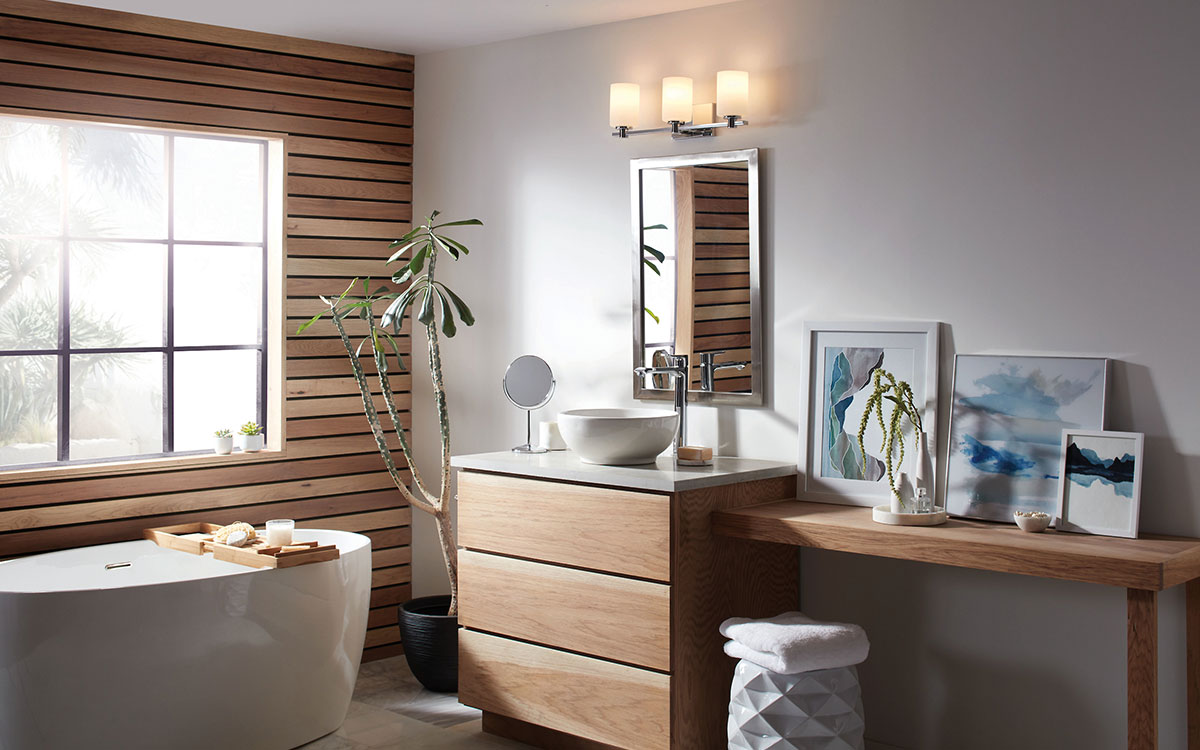
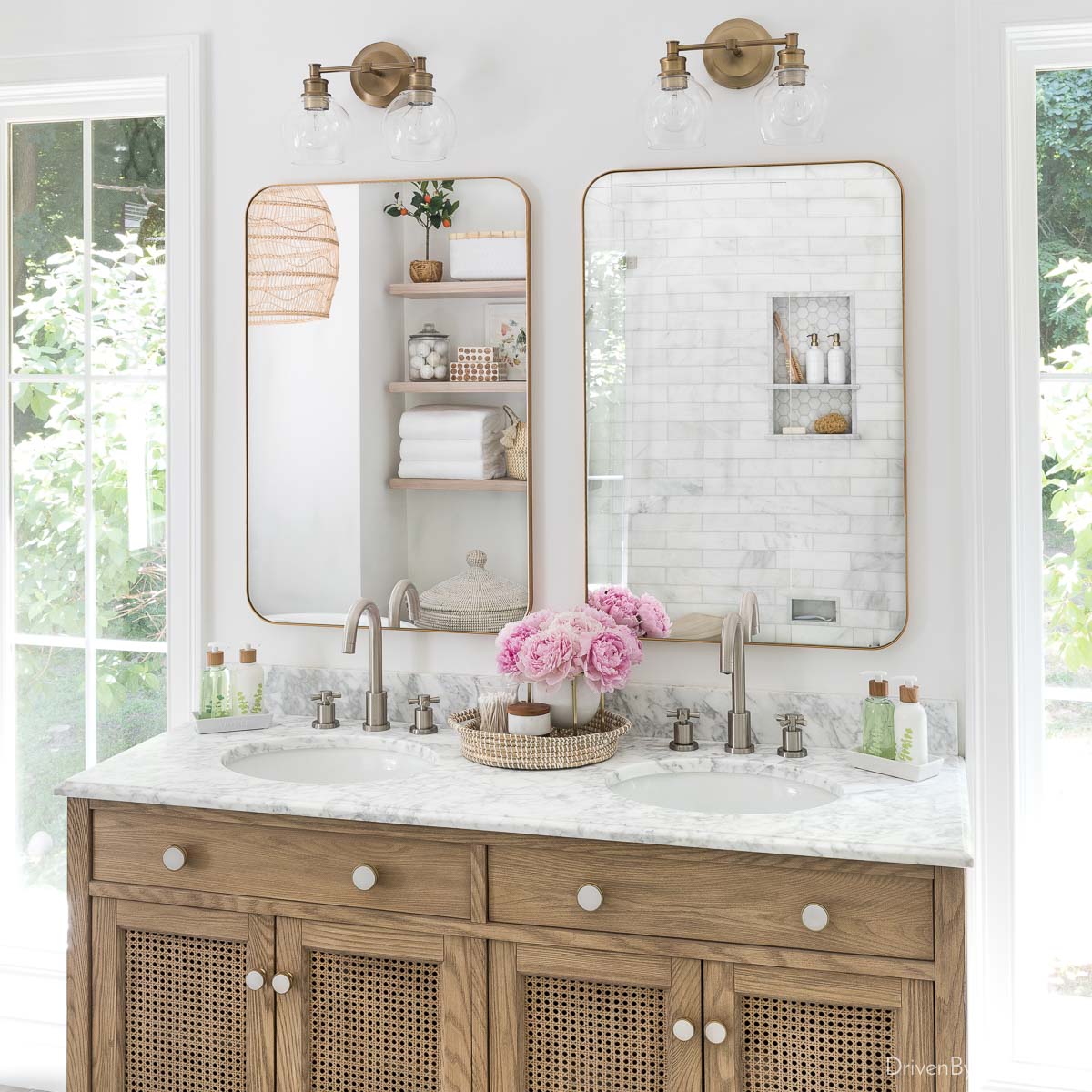

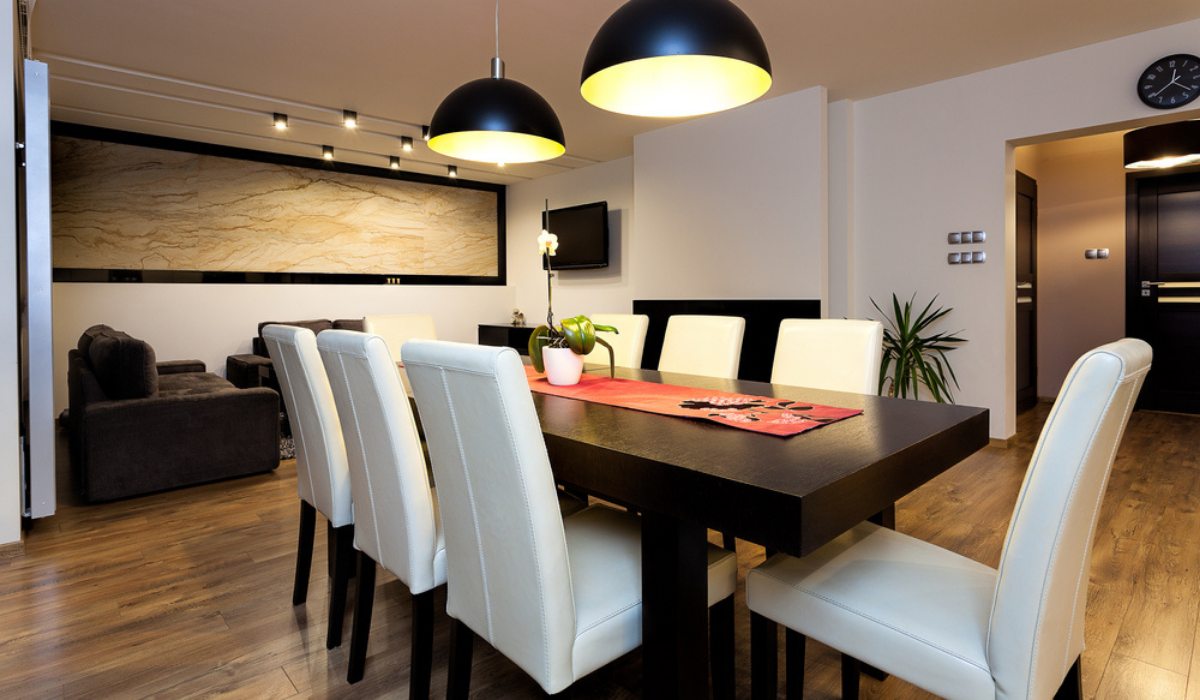
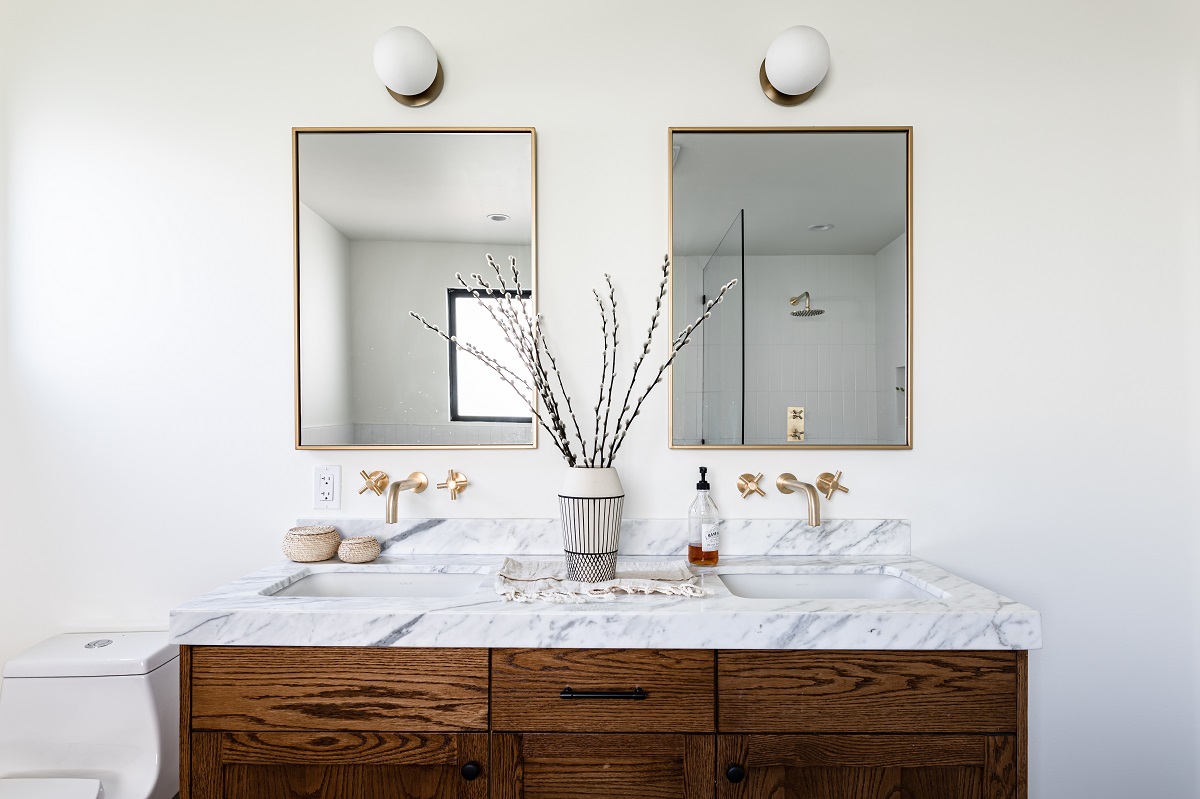
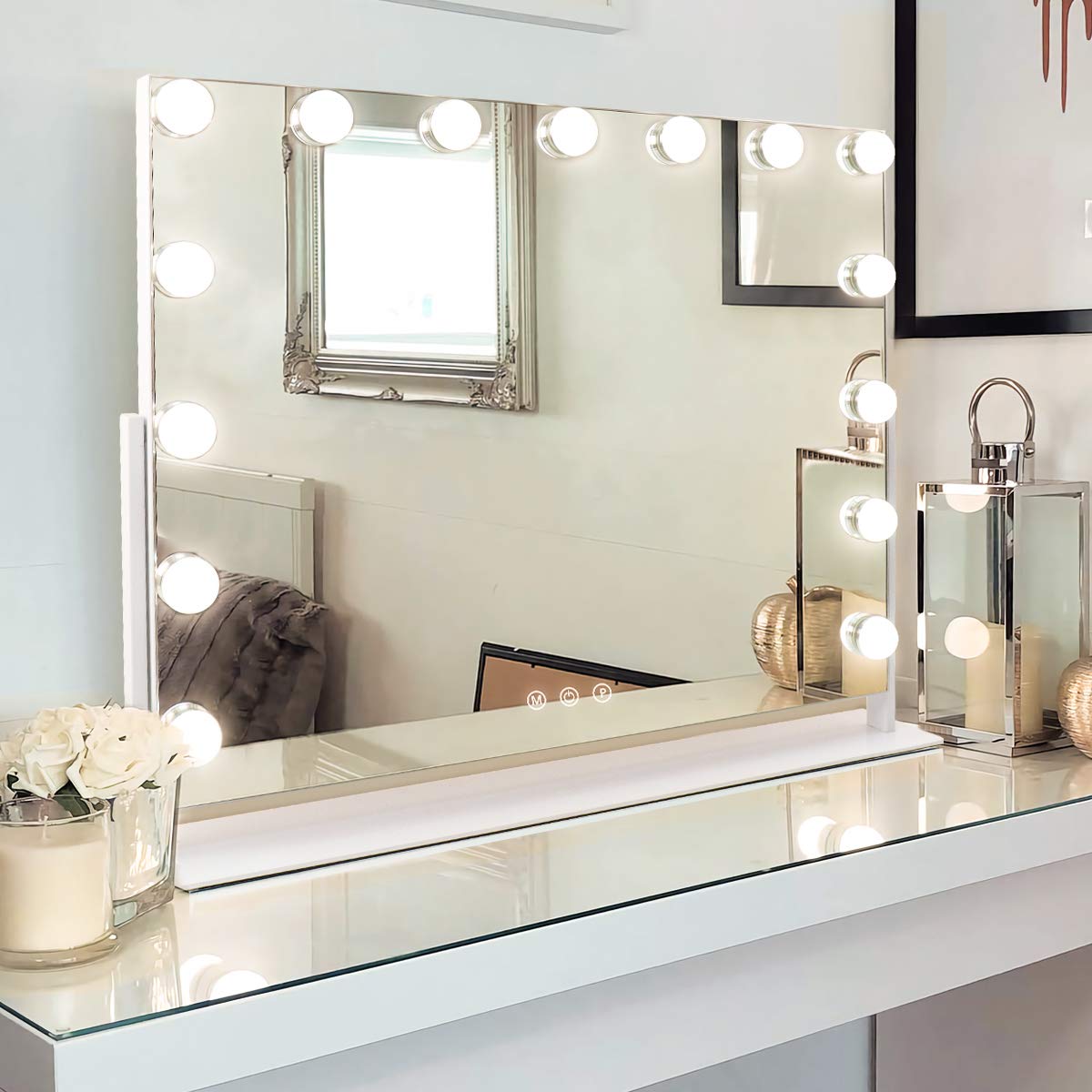
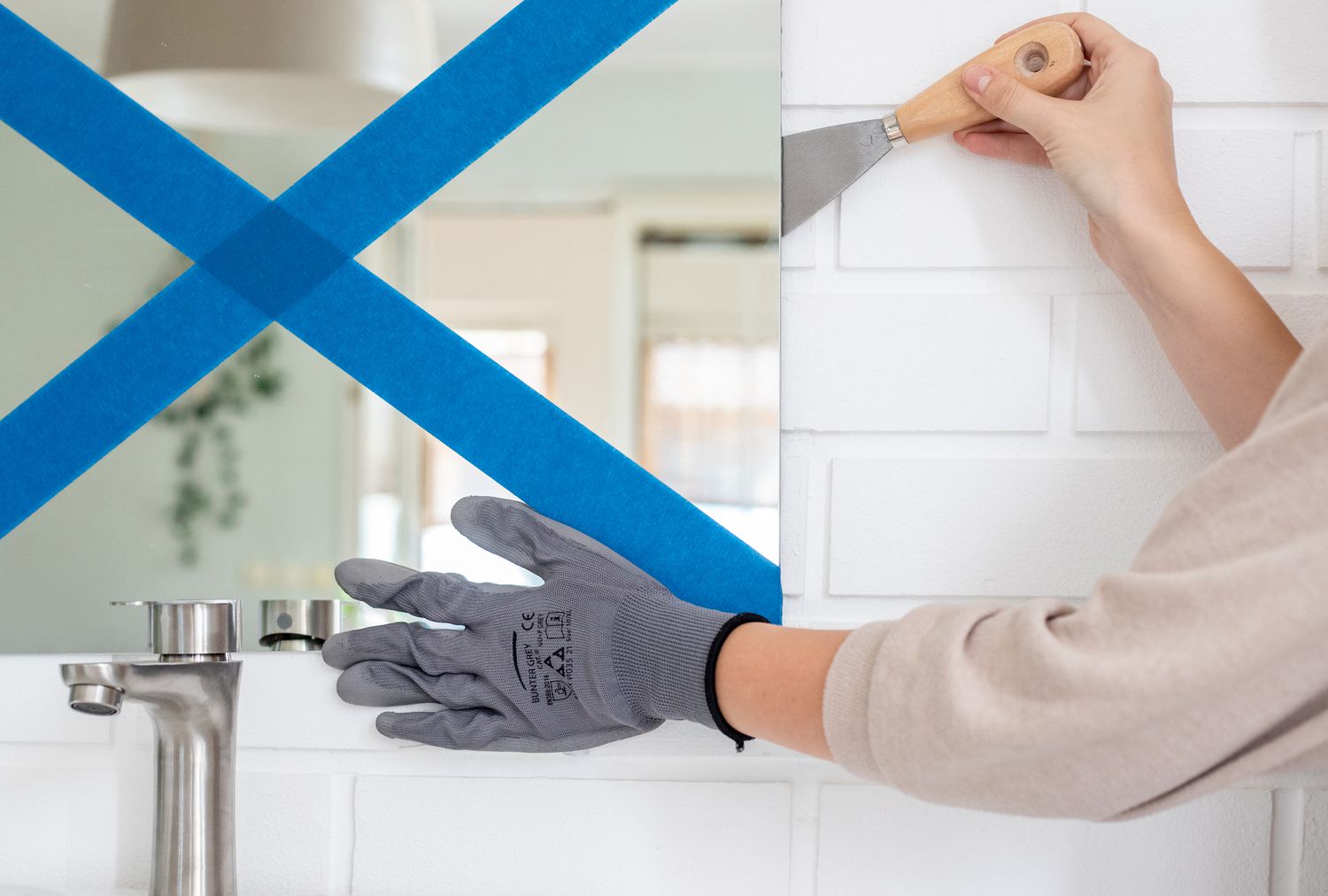
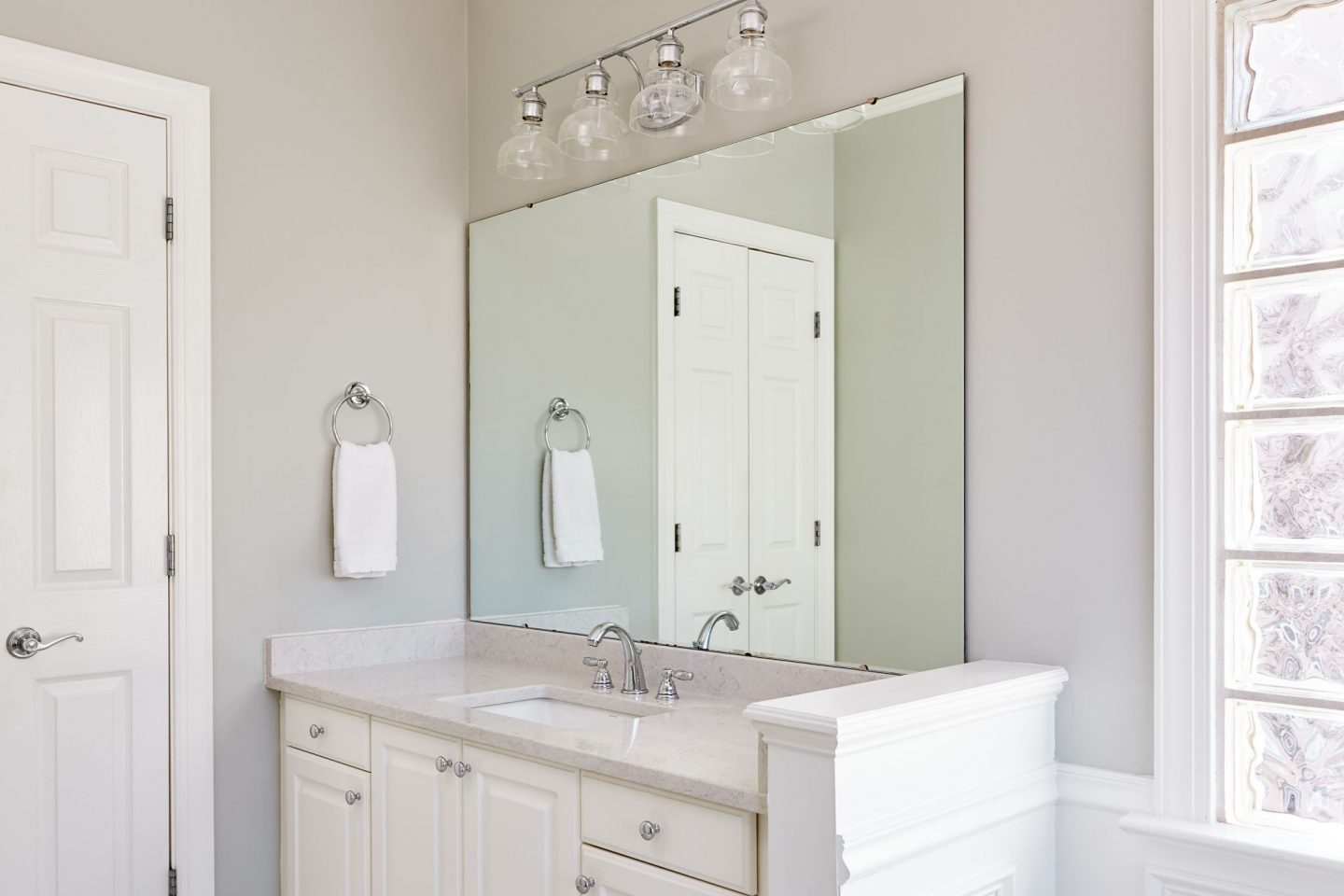
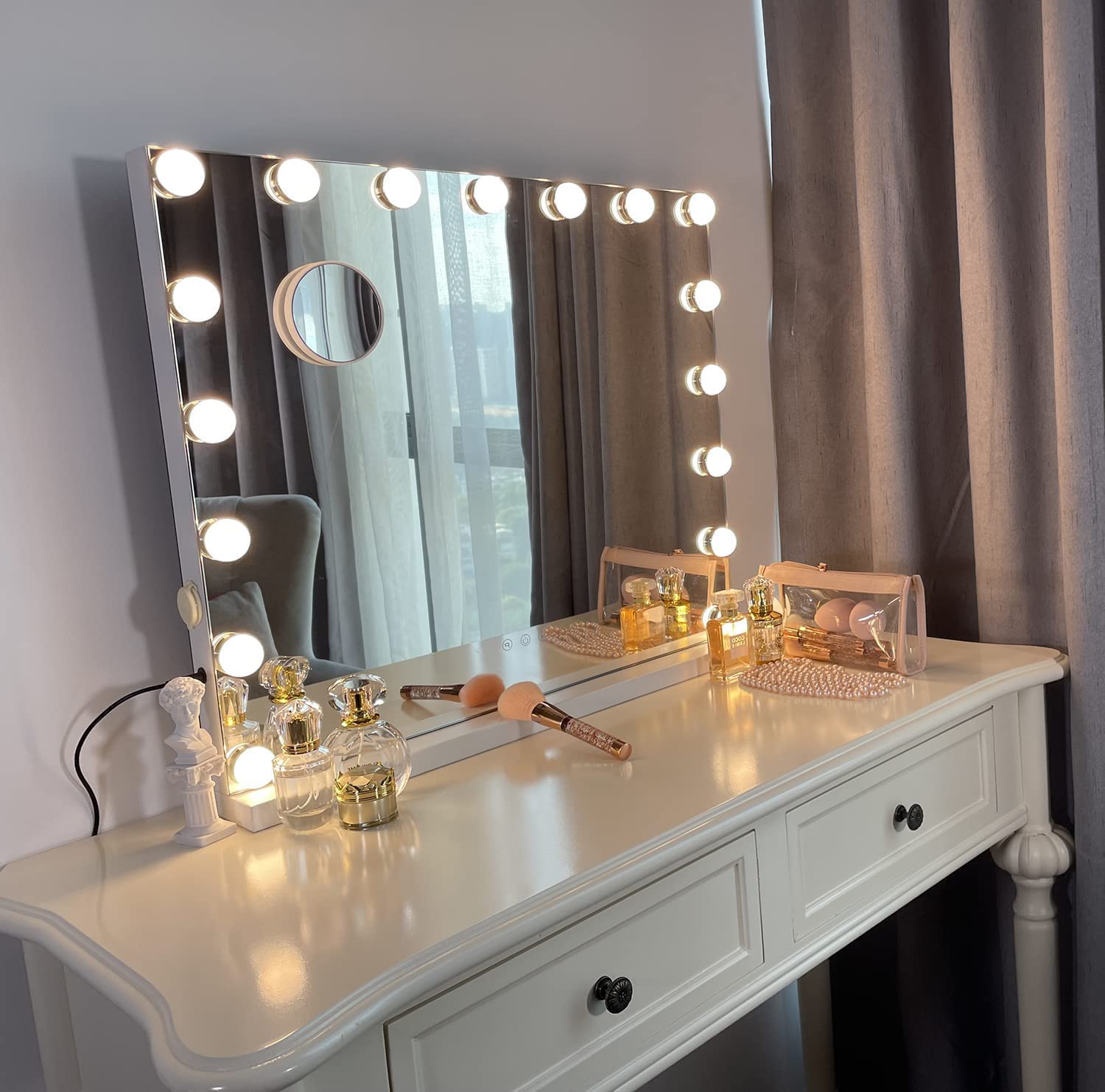
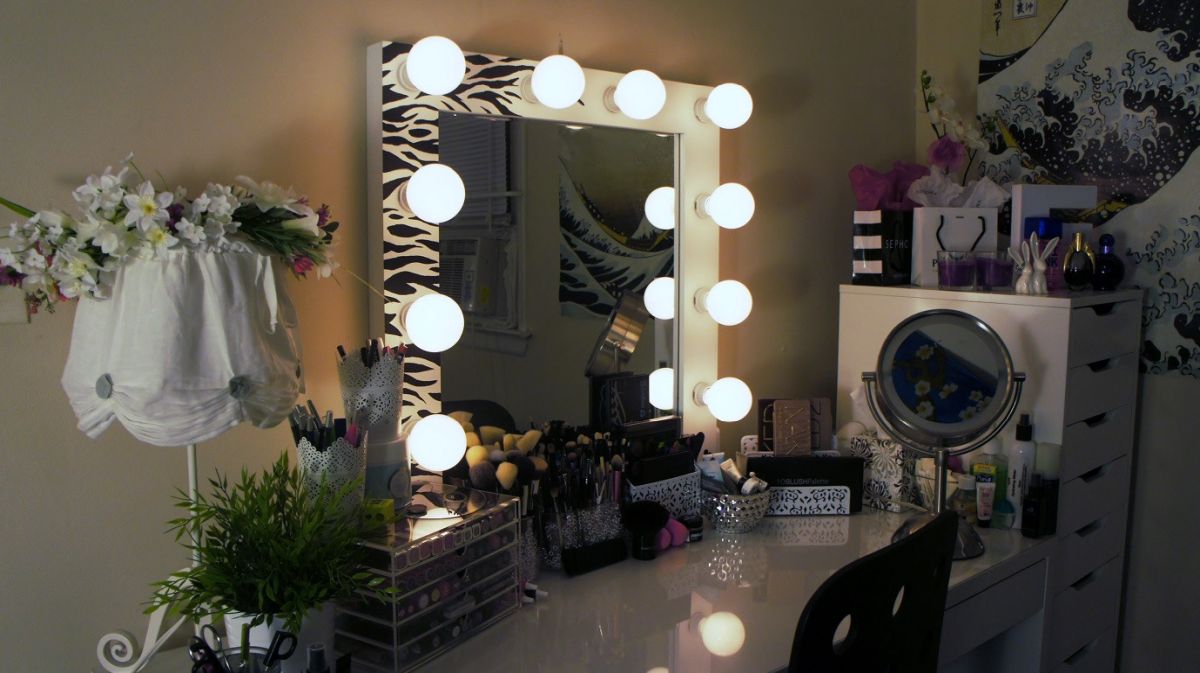

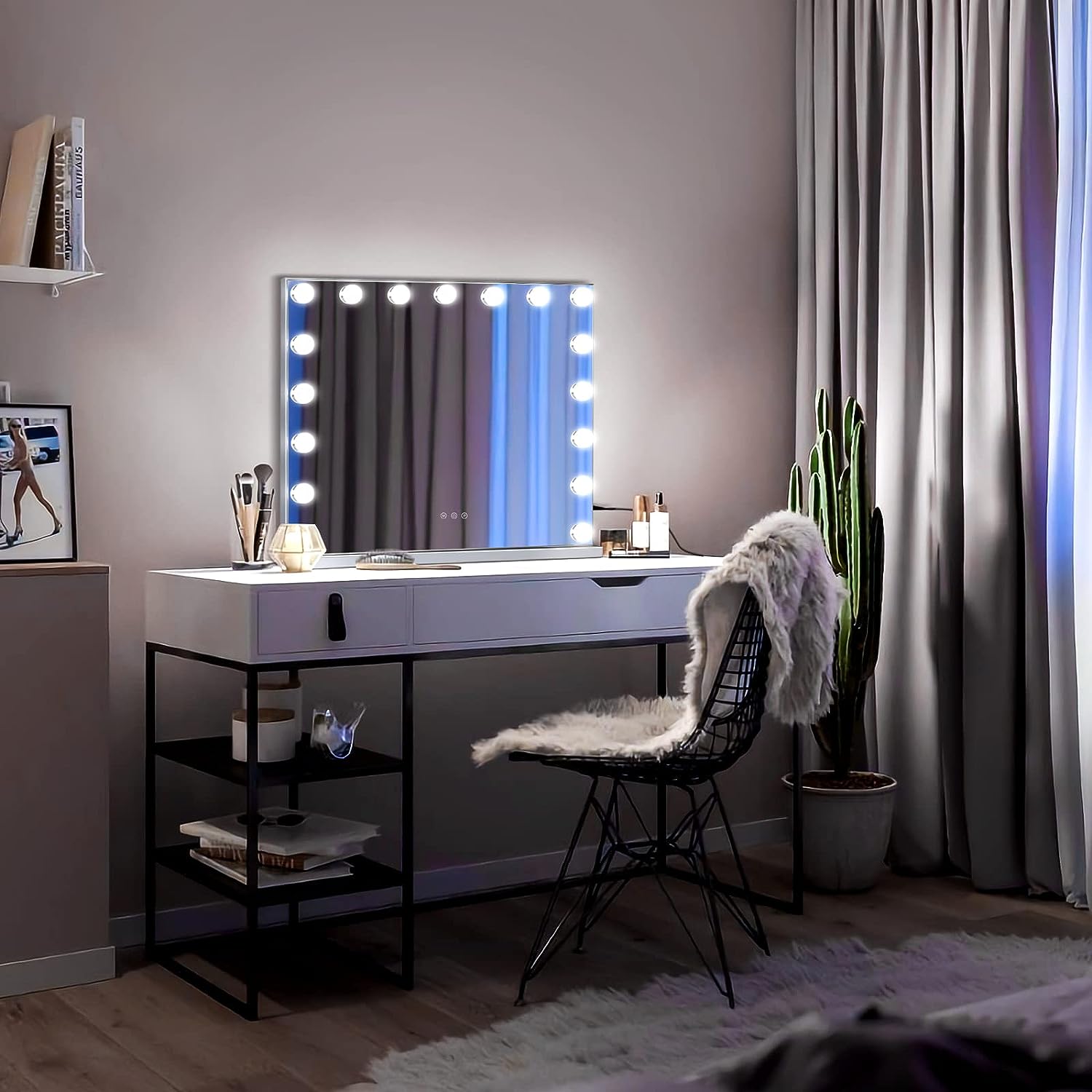
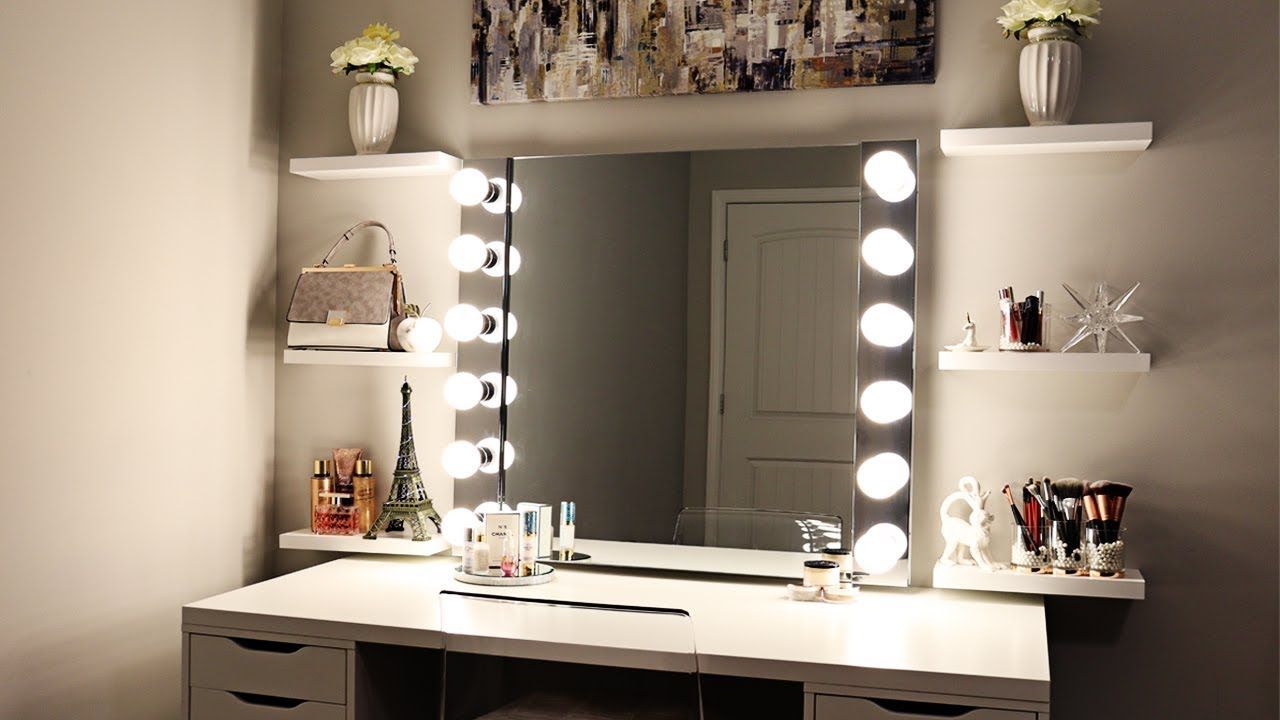


0 thoughts on “How Big Should The Mirror Be Over The Vanity”